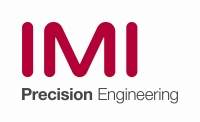Problems of poor air or gas quality can cause equipment failure and shutdowns. Filtering instrument air and gas can prevent such problems, but having a filter set at the compressor may be inadequate.
Particulates, water and oil in the stream of instrument air or instrument gas can wreak havoc with downstream equipment. Contamination causes 90 per cent of valve failures. Oil contamination can cause hydraulic lock between the spool and sleeve, causing positioners to fail. If oil reaches the dryer media it causes immediate failure. Additionally, oil or water can cause inaccurate readings from analytical equipment. These failures can result in shutdown and expensive maintenance.
Fitting a single filter at the air compressor outlet or instrument gas supply source can prevent these failures. However, this does not protect against contaminants introduced after the air or gas leaves the source. For example, storing pipework outside can cause contamination. Long pipelines from supply to instrumentation experience variations in temperature, causing moisture to condense. Simple filter/regulators remove little water and no oil and the aggressiveness of air system contaminants is magnified under compression. Finally, a "one-size fits all" filter at the source is inadequate for specialised equipment requiring finer filtration and oil removal.
Awareness of the need for additional point-of-use filtration is growing. However, most operators only install a single filter/regulator. This helps remove particulates but does not remove water or oil.
Placing a multi-stage filtration system including a coalescing filter to remove oil vapour as close as possible to the equipment using instrument air or instrument gas protects sensitive instruments and keeps critical equipment operating as intended.
Determining Filtration Requirements
Industry standards and manufacturer’s recommendations highlight differences in requirements for clean air or gas, depending on the equipment used.
Some industry standards provide guidance to determine adequate filtration levels. The ISA-7.0.01-1996 Quality Standard for Instrument Air sets standards for particulate and oil contamination. This sets the maximum allowable oil content at 1 ppm. It requires removal of particles 40 µm or larger, with a caution that some devices require finer filtration. It also states that dew point should be 10°C below ambient temperature. Finally, ISA-7.0.01 states that air quality should be sufficient for the highest demand situations and that air intake should be contaminant-free.
This ISA standard sets a guideline, but it may be too general for certain equipment commonly used in oil and gas extraction, refining and hydrocarbon and chemical processing.
The International Organisation for Standardisation’s document ISO 8573-1:2010 specifies classes of compressed air purity for particles, liquid water, moisture vapour and oil vapour. This standard provides a straightforward way to communicate an application’s requirements and determine whether a filtration system will meet them.
Anatomy of good point-of-use filtration
A multi-stage filtration system should meet an application’s specific requirements and be installed as close as possible to the equipment being powered.
Here are some properties to look for when specifying a point-of-use filtration system.
Reliable particle removal. Modern three-stage filtration systems use multiple filters to remove ever smaller particles. This multi-stage approach improves the air quality at each phase, prolonging the filter element life of the next stage.
High water extraction efficiency. Running instrument air or instrument gas through three filters in succession removes more than 95 per cent of liquid water.
High oil removal efficiency. General purpose filters do not remove oil contamination. The third stage of a three-stage filtration system is typically a coalescing filter for oil removal. The filter element can be designed to remove oil to 0.01 ppm, or 99.9 per cent of oil vapour.
Compatibility with instrument air and instrument gas. Basic filter/regulators designed for use with compressed air may fail prematurely under harsh conditions, particularly when used with instrument gas containing high levels of hydrogen sulphide. Three-stage filtration with components that meet the requirements listed above will prevent this problem.
Service life indicator. A filter elements life is determined by the level of contamination in the air or gas, not by length of service. A visual indicator that signals when the filter element is too contaminated makes it easy to know when to replace it. This ensures point-of-use air or gas is maintained at the expected pressure and filtration level.

